Table of contents
Broccoli or broccoli ( Brassica oleracea var. italica) is also known as sprouted cabbage. Although thehead, i.e. the florets, are usually used, the whole plant, including the leaves and stalk, is edible.
Use in the kitchen:
Broccoli has only a slight taste of cabbage, its leaves even remind you of green asparagus. That's why it is also popular with people who don't like the taste of cabbage.
As a vegetable, the entire plant, but especially the head or flower, can be used in many different ways. Cooked, boiled, steamed or stewed, the cabbage tastes excellently spicy in soups, in stews, in casseroles, in curries, as a salad or as a vegetable side dish. Asian cuisine often uses broccoli - for example as broccoli tempura.
All parts of the broccoli plant can be eaten raw, for example in a salad or smoothie. If your digestion reacts with flatulence, it is better to use only the florets and season with fennel seeds or caraway seeds.
How do I cook broccoli properly? When steamed gently, most of the valuable ingredients (e.g. vitamin C) are retained. If you cover the florets and cook them in a little water for just 6-10 minutes, they will stay crisp and will not lose any of their flavor or consistency. 1
Can you eat the stalk of broccoli? Leaves and stems can be prepared in a similar way to asparagus, provided the plant is young. The stalk also tastes very good when peeled, provided it is still fine and not woody.
Spices such as (a little) salt, nutmeg and garlic go very well with broccoli. Pine nuts and almond leaves also go well with the cruciferous vegetable. It is also suitable for delicious recipes with curry and ginger, coconut or chili.
You can also grow sprouts from broccoli seeds. These are particularly good for adding flavor to salads or for decorating dishes.
Vegan recipe for broccoli leaves with hazelnuts:
Ingredients for about 4 servings: 1 kg broccoli leaves (or kohlrabi), 50 g whole hazelnuts, 5 tbsp (or less) olive oil (or rapeseed oil), 1 garlic clove (peeled and thinly sliced), sea salt,pepper.
Preparation: Rinse the young, fine broccoli leaves well under running water and then shake or pat dry. Roughly chop the leaves and stalks. Roast the hazelnuts in a non-stick pan without fat until golden brown, then let them cool and roughly chop.
Now add the oil to the pan and briefly fry the thicker stalks first, then the thinner ones. Add the garlic slices and broccoli leaves and fry again briefly. Season with sea salt or salt flakes and pepper. Sprinkle with the roasted hazelnuts just before serving.
| Not only vegans or vegetarians should read this: Vegans often eat unhealthily. Avoidable nutritional errors. |
Shopping - where to buy?
Although broccoli is a summer vegetable, you can get it from supermarket chains such as Coop, Migros, Denner, Volg, Spar, Aldi, Lidl, Rewe, Edeka, Hofer etc. mostly all year round. In northern Central Europe, the cabbage vegetable is in season between July and October. During these months you can also find white, yellow, purple or almost black broccoli at weekly markets or in well-stocked supermarkets/vegetable shops. Prefer organic quality and regional products.
Fresh broccoli, as we all know it, is dark green in color and has a firm consistency. If there are spots, rotten spots or yellow flower buds, they are clearly no longer fresh. Due to its sensitivity to mechanical damage, broccoli is often found wrapped in foil. 2
Wildly found:
Brassica oleracea, the vegetable cabbage, is a wild subspecies of the cabbage plants of our cultivated cabbage species. It is not possible to say for sure whether it is really their "ancestor". If cultivated cabbage varieties are allowed to seed, they sometimes revert to this wild form. Externally, this species resembles mustard with its yellow flowers and long false ears, but has thicker, greyish, fleshy leaves. If you eat the leaves of the wild cabbage raw, they taste bitter. After a longer cooking time, they lose this bitterness and are tastier. 3
Storage:
Broccoli has a very high metabolic activity, which means that it quickly loses valuable ingredients. In addition, the florets are very sensitive and susceptible to putrefaction pathogens. Pre-cooling at around 0.5 °C immediately after harvest and a very high humidity of 96-99% would be ideal. This is mainly the case in CA storage (Controlled Atmosphere). 2
After purchase, broccoli can be stored in the foil in the refrigerator for up to 3 days. High temperatures and light cause broccoli to wilt or bloom (ie turn yellow) quickly. In addition, it loses at least 10% of its vitamin C content every day in warm temperatures. 4 If you divide the head into small florets, you can blanch them briefly and then quickly freeze them.
Typical storage damages are spotting and rot ( Botrytis cinerea, bacterial soft rot, Alternaria brassicae, Sclerotinia sclerotiorium, Peronospora parasitica). 2
Ingredients - nutritional value - calories:
Broccoli has a low energy content of 34 kcal/100g, which comes mainly from carbohydrates (6.6%). Fat is almost non-existent (0.3%) and protein is not particularly high at 2.8%. However, the water content is very high at almost 90%. 5
Broccoli provides valuable vitamins, such as vitamin K (102 µg).Lettuce and rocket (108 µg) have similar values, and chard has particularly high levels of it at 830 µg/100g. This fat-soluble vitamin is found mainly in green vegetables, mainly leafy vegetables. It is important for rapid blood clotting and for healthy, strong bones. 5
Broccoli should not be underestimated as a source of vitamin C. With 89 mg/100g, the cabbage vegetable even contains more ascorbic acid than strawberries (59 mg) or aronia berries (81 mg). Long cooking can cause a lot of the water-soluble vitamin to be lost or dissolve in the cooking water. As a radical scavenger, vitamin C is important for a stable immune system. 5
Broccoli has 63 µg/100g of folate, a folic acid-active substance group; leeks have the same amount. This may not cover the daily requirement of 300 µg 6, but in combination with pulses such as mung beans (625 µg), it definitely does. 5 The water-soluble vitamin (formerly B9 or B11) is important for cell renewal and therefore an increased intake is essential for expectant mothers BEFORE pregnancy (requirement: 550 µg). 6
Broccoli contains 316 mg/100g of the mineral potassium, which is not so little compared to the "potassium-rich" banana (360 mg). Pulses have a particularly high potassium content, such as white beans : 1795 mg/100g. 5 Potassium is important for maintaining osmotic pressure in the cells. For healthy blood pressure and to keep the heart healthy, you need the right sodium-potassium ratio, which is what broccoli has. 7
In addition to the nutrients mentioned here, broccoli also contains pyridoxine (vitamin B6), manganese and phosphorus.
Health aspects - effects:
The increasing popularity of broccoli is not only due to the fact that it has less of a cabbage taste than cauliflower, for example, but also because it is easier to digest. What is healthy about broccoli? In addition to its stomach and intestinal protection properties, broccoli also has positive properties for a healthy heart. The balanced sodium-potassium ratio promotes the excretion of excess fluid and thus relieves the cardiovascular system. 7
Like all cruciferous vegetables, broccoli contains sulphur-containing secondary plant ingredients that protect against insect pests and act as natural antioxidants. 8 These mustard oil glycosides are also said to have a preventive effect against cancer. 9 In particular, an indole-containing derivative of L-ascorbic acid, ascorbigen, is said to have an anti-carcinogenic effect. 10
Sulforaphane, a mustard oil that acts as an indirect antioxidant, is said to be supportive in conventional cancer therapies. By activating phase II enzymes, cancer cells, such as those in pancreatic or prostate cancer, are vulnerable to chemotherapy, for example. 11,12 Sulforaphane from broccoli sprouts is also said to be effective against the stomach-damaging bacterium Helicobacter pylori, against which even some antibiotics fail. 13
Other secondary plant substances include anthocyanins, which are found particularly in dark green (or purple) broccoli. These water-soluble plant pigments bind free radicals in the body and protect it from damage.
Unfortunately, it is not always clear how much of the healthy cabbage vegetable you should eat to achieve positive effects. In any case, about 1 spoonful of broccoli sprouts contains the same amount of the mustard oil glycoside sulforaphane as 500 g of broccoli vegetables.
Dangers - Intolerances - Side effects:
Allergies to cruciferous vegetables are generally rare: if they do occur, they are usually contact allergies. Intolerances are somewhat more common. Some people react to cruciferous vegetables with stomach problems and flatulence.
Use as a medicinal plant:
Broccoli is used for simple respiratory diseases, but also for asthma and allergic rhinitis (hay fever) as well as for chronic lung diseases (COPD). 14
Occurrence - Origin:
Broccoli originated in Asia Minor and came to Europe via Italy. The "Italian asparagus" reached England in the 16th century and the United States in the 18th century. The areas around Verona in Italy are very important for the European market.
Growing in the garden or as a potted plant:
Broccoli comes almost exclusively from so-called CMS breeding methods. Even the organic varieties are hybrids and therefore male sterile (CMS = cytoplasmic male sterility). Although organic plant breeders are very interested in non-hybrid broccoli varieties, unfortunately these produce much less yield and are therefore much more expensive for consumers. 8
Broccoli is usually grown from young plants. Sowing seeds is much more laborious, but it is a good idea because you get seeds for the next year. Young plants are planted between the end of May and the end of July at a distance of 50 x 50 cm on particularly nutrient-rich soil. The plants are covered with a net to protect them from being eaten by birds.
During growth, broccoli needs sufficient and regular water, but otherwise has few demands.
Harvesting takes place as soon as the middle flower is well developed but still closed. The flower heads are cut off with a stem about 10-15 cm long. If the plant is allowed to continue growing, further, slightly smaller flower heads will develop from the side buds.
Broccoli is affected by pests such as the whitefly or the caterpillars of the cabbage white butterfly, which can sometimes cause major damage. Since clubroot (caused by Plasmodiophora brassicae) can also occur, a wide crop rotation is very important for brassica vegetables.
General information:
Bred from the diverse plant species of cabbage ( Brassica oleracea), broccoli ( Brassica oleracea var. italica) is a variety of it. It is very closely related to cauliflower ( Brassica oleracea var. botrytis).
Alternative names:
Wikipedia also lists well-known names such as broccoli, asparagus cabbage, and winter cauliflower. But the spelling can also vary: from broccoli to brokoli or broccoli to brocoli. This name is derived from the Italian il broccolo (perhaps from i broccoli = Brussels sprouts). 15
In English, this brassica is known as broccoli, asparagus broccoli or calabrese. 7
Other uses:
Broccoli seed oil is also produced from the seeds and is used in cosmetics as a hair and facial care product. 16
Literature - Sources:
Bibliography - 16 Sources
| 1. | Schilch E, Schilch M. Garverfahren für pflanzliche Lebensmittel und deren Einfluss auf Mikronährstoffe. Aktuell Ernährungslehre & Praxis, ErnährungsUmschau. 2013;60(8-9). |
| 2. | Böttcher H. Frischhaltung und Lagerung von Gemüse. Ulmer: Stuttgart. 1996. |
| 3. | Mabey R. Essbar. Wildpflanzen, Pilze, Muscheln für die Naturküche. Haupt: Bern, Stuttgart, Wien. 2013. |
| 4. | Bmnt.gv.at Bundesministerium Nachhaltigkeit und Tourismus. A-Z der Obst- und Gemüselagerung. 2019. |
| 5. | USDA United States Department of Agriculture. |
| 6. | DGE Deutsche Gesellschaft für Ernährung. |
| 7. | Roger JDP. Heilkräfte der Nahrung. Ein Praxishandbuch. Advent-Verlag: Zürich. 2006. |
| 8. | Pini U. Das Bio-Food Handbuch. Ullmann: Hamburg, Potsdam. 2014. |
| 9. | Stoewsand G. Bioactive organosulfur phytochemicals in Brassica oleracea vegetables - a review. Food Chem Toxicol. 1995;33(6). |
| 10. | Preobrazhenskaya MN, Bukhman VM et al. Ascorbigen and other indole-derived compounds from Brassica vegetables and their analogs as anticarcinogenic and immunomodulating agents. Pharmacol Ther. 1993;60(2). |
| 11. | Kallifatidis G, Labsch S et al. Sulforaphane increases drug-mediated cytotoxicity toward cancer stem-like cells of pancreas and protate. Molecular Therapy. 2011;19(1). |
| 12. | Idw Informationsdienst Wissenschaft. Preisgekrönte Forschungsergebnisse: Wie Brokkoli-Wirkstoffe die Krebstherapie unterstützen. Universitätsklinikum Heidelberg. 2012. |
| 13. | Moon JK, Kim JR et al. Analysis and anti-Helicobacter activity of sulforaphane and related compounds present in broccoli (Brassica oleracea L.) sprouts. Journal of Agricultural and Food Chemistry. 2010;58(11). |
| 14. | Champeau R. Broccoli may help protect against respiratory conditions like asthma. ScienceDaily. 2009. |
| 15. | Wikipedia Brokkoli. |
| 16. | Kirscher S, Göppel H. Handbuch der Pflanzenöle. Param. 2014. |

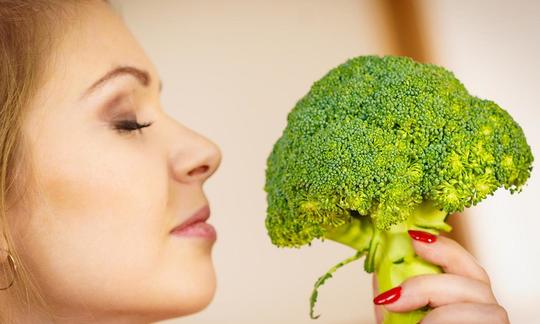

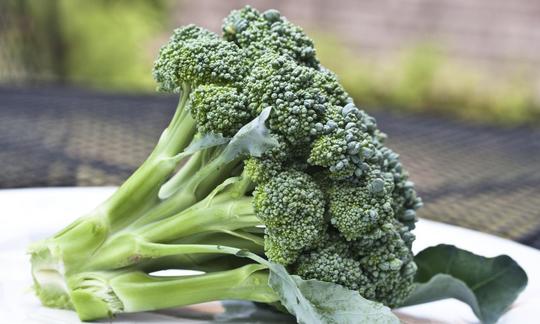

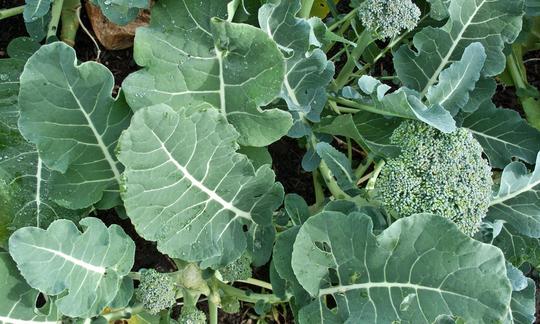

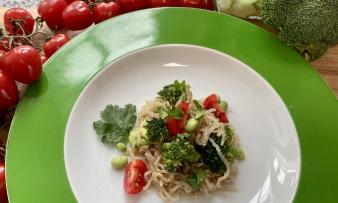
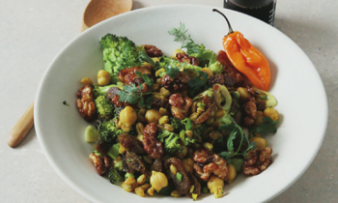
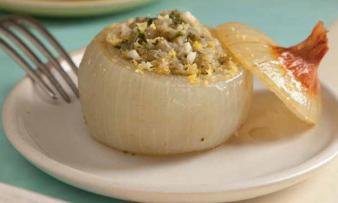





Comments